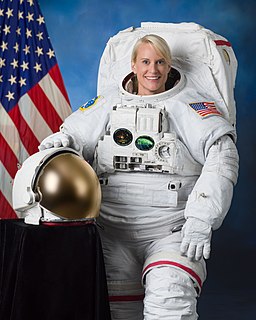A Quote by Carolyn Porco
Saturn is the most photogenic planet in the solar system.
Quote Topics
Related Quotes
Voyager found Saturn to be a planet with a complex interior, atmosphere, and magnetosphere. In its rings - a vast, gleaming disk of icy rubble - the mission recorded signs of the same physical mechanisms that were key in configuring the early solar system and similar disks of material around other stars.
It changes your perspective to be able to look out the window and see the planet. One of the thoughts that I had when I first got up here was, 'We really do live on a planet, and we are in a solar system, and we are flying through space right now.' I mean, this is something that you know, obviously, but to see the planet - it's amazing.































